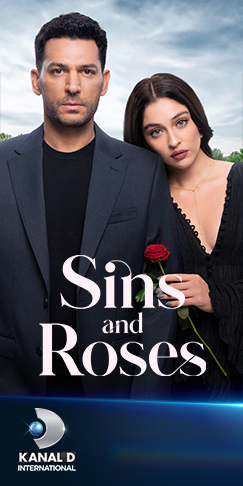The eight-episode miniseries, filmed in Panama and the Dominican Republic, begins with the story of Chinese slaves in Cuba in the 1860s to share a passionate and multicultural drama with a large Latin presence, both in front of and behind the camera.
The story goes that the traffic of Chinese slaves -mostly men- to Cuba exploded in the late 1850s, less than two decades after the British Empire, with a more developed economy and several revolts under its belt, saw fit to abolish slavery in 1834. Without as many Africans being captured and sold, the Spanish plantations in Cuba needed another workforce to exploit. China, still suffering the impact of the Opium Wars, was the ideal place from which to take workers, whether volunteers or in forced servitude. In the following years, these slaves would be a key piece in the Cuban war of independence.
This true story, so little known in the rest of the region – in Cuba, Chinese slaves and soldiers are remembered for their role in the revolution with a monument in Havana that reads: “There was not a single Cuban-Chinese deserter. There was not a single Cuban-Chinese traitor” – is the basis on which the captivating narrative of Coolie is built, the limited series from the Singaporean production company Cathay Film Company that had its “trade premiere” at the recent edition of Content Americas.
Coolie, distributed internationally by I.E. Entertainment, follows the moving story of Chulin, played by Hong Kong actress and model Louise Wong, a young woman who escapes from her country and arrives in Cuba looking for her fiancé, but finds herself in a very difficult reality for Chinese slaves, something that affects her once she is kidnapped by one of the villains of the story. Her story is one of great danger, suffering, overcoming, but also of love, thanks to her relationship with Leo Ortega, played by Colombian Mauricio Hénao.
To understand Chulin’s story, one must also understand the story behind it, that of businesswoman Meileen Choo, CEO of Cathay Organization Group, who has always had a desire to know more about the Chinese diaspora, given that that is also the origin of her family: “I was always very interested in the history of Chinese people who have lived outside the country,” said the executive, interviewed in Miami. “I began to read about it and discovered that there were Chinese people in Cuba, just as there were in Peru, Bolivia and other Latin American countries.”

Meileen Choo
After going to Cuba in the 1990s to meet the Chinese community that still persisted on the island, Choo took on the challenge of telling this story. To achieve this, “the most important thing” was a report from the period, commissioned by the Qing Dynasty, where some 1,200 ‘coolies’ in Cuba were interviewed to document how people lived in the country. “The horrible treatment that Chinese slaves suffered in Cuba comes from that report,” she explained. “A lot of what you see in the series comes from there.”
“I originally wanted it to be a movie, so I worked with a Korean-American screenwriter, but he was a man and I wanted to tell a story from a female perspective. So I discarded that idea and, when I finally decided to do it, I looked for female screenwriters. I wrote the first episode and from there we started working on the rest,” the showrunner recalled.
“When we finished the script, after the pandemic, I met with our executive producer and they said: ‘It’s a period story, it will take about two years.’ But I wanted to do it in 2023 and we did it,” she added.
The production, which took four and a half months, used locations in Panama and, mostly, the Dominican Republic.
“I had never filmed in Latin America before and it was great,” said director Arvin Chen (Pachinko). “The actors were amazing, but just being there was really nice. Even though we had department heads from the UK and North America, 90% of the crew was local, mostly Dominican or Panamanian.”
“We had a good number of real locations and we wanted them to be as natural as possible. The sets we built looked very authentic and it was easy to film in those locations,” he added.
As for the story, the director highlighted its multicultural aspect: “I love these stories where a person must adapt to another reality, where there are two cultures colliding. Everything I have done has been multilingual, so it is fun to work with actors of multiple nationalities.”
A global cast that speaks English
One of the most important decisions in Coolie was to use English as the main language, although there are scenes with dialogue in Chinese and a bit of Spanish. “Meileen made the decision to do the series in English for commercial reasons, but also for reasons of authenticity: I think it would have been even more difficult to do a series in which all the accents in Spanish were different,” argued Chen.
This meant a challenge for the casting, which looked for talent in multiple parts of the world, but led the actors to do their work in a language that, in many cases, was not natural to them.
“That was my first time acting in English in front of a camera,” shared Camila Arteche, the Cuban actress, who has lived in Miami for five years, but clarifies, jokingly, that “in Miami, English is not spoken.”
“It was difficult, but it was also beautiful because everyone has their Latin American accent,” she added.
Arteche plays Maria, initially presented as the antagonist of the protagonist, but with a complexity that the actress assures will win over part of the audience. “I was very excited when I got the role because I had never been in a project about my roots,” said the actress. “Maria is one of the most difficult characters I have played: she is very contradictory, very passionate. Women will identify with her journey.”
For Camila Camilo, English was not a challenge: “I work mainly in English; I was born in Santo Domingo, but I moved to the US when I was 16,” she explained. “My entire career has been in the US and my notes were different: that I speak too fast or that my accent is too American.”

The chance to play Elvira was unique for her: “I was struck by the fact that they were looking for an Afro-Latina who could speak both languages because I rarely have that opportunity,” said the actress. “It was a beautiful gift to be able to audition, because it was a big call and I never thought I would get the role.”
Sian Chiong’s story is also very interesting. The Cuban actor, of Chinese descent, had his second experience in English in Coolie. “My previous experience was in Colombia, in a film with James Franco, but the director was Spanish so communication was simple and only the scenes were in English. Now it was more difficult because Arvin speaks so fast,” he recalled with humor.
“This story was perfect for me as a Cuban whose great-grandfather came from China. It is a very special project for me,” he added.
Chiong was close to landing the Ortega character, but it was eventually decided to switch roles with Hénao, leaving the villain Nestor in his hands: “At first I was frustrated that I couldn’t play Leo, but the more I read, the more I liked Nestor,” he said. “I’ve never played a character this evil, with so much action and drama.”
The eight-episode series is looking for a home on one of the main regional platforms and leaves the possibility open, within its captivating narrative structure, for more seasons, with new characters. “We want as many people as possible to see this story,” said Choo.










